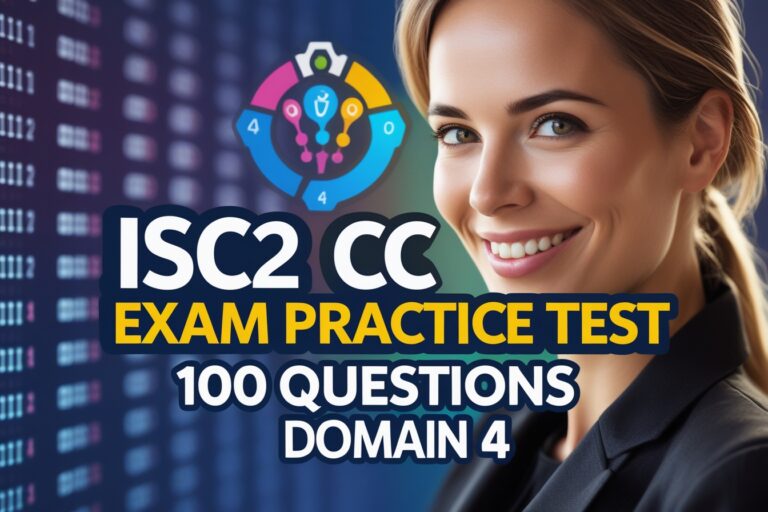1. ………………. can be used for carrying digital data, PCM encoded voice signal, coded at 64 Kbps.
A) A channel
B) B channel
C) D channel
D) H channel
2. Different types of connections which can be set up over a B channel of ISDN is/are ..
i) Packet switched connections ii) Circuit switched connections iii) Frame mode connections iv) Semi permanent connections
A) i, ii and iv only
B) i, iii and iv only
C) ii, iii and iv only
D) All i, ii, iii and iv
3………… are used for user information a higher bit rates such as fast facsimile, video, high speed data, high quality audio etc.
A) A channels
B) B channels
C) D channels
D) H channels
4. The basic channel structure of H channels is a package offered to the user which consists of ………. full-duplex 64Kbps B channel(s) and ……… full-duplex 16Kbps D channel.
A) one, two
B) two, one
C) two, three
D) three, two
5. …………. of ISDN refers to certain finite arrangements of physical equipment or combination of equipment
A) Reference grouping
B) Reference points
C) Functional grouping
D) Functional points
6. ………… in ISDN correspond to the conceptual points used in order to separate groups of functions.
A) Reference grouping
B) Reference points
C) Functional grouping
D) Functional points
7. ………… includes the functions associated with the physical and electrical termination of the ISDN on the user’s premises.
A) Network Termination 1 (NT1)
B) Network Termination 2 (NT2)
C) Network Termination 1,2 (NT12)
D) Terminal Equipment Type 1 (TE1)
8. …………. is a customer premises switching equipment and it is an intelligent device which performs switching and concentration functions.
A) Network Termination 1 (NT1)
B) Network Termination 2 (NT2)
C) Network Termination 1,2 (NT12)
D) Terminal Equipment Type 1 (TE1)
9. Digital telephones integrated voice/data terminals and digital fax are the examples of …………. in ISDN.
A) Network Termination 1 (NT1)
B) Network Termination 2 (NT2)
C) Network Termination 1,2 (NT12)
D) Terminal Equipment Type 1 (TE1)
10. The different reference points in ISDN is/are
i) Terminal point (T) ii) System Reference Point (S) iii) Rate Reference Point (R) iv) United Reference Point (U)
A) i, ii and iii only
B) i, iii and iv only
C) ii, iii and iv only
D) All i, ii, iii and iv
11. ………. is used to provide a non-ISDN interface between the user equipment with the adapter equipment.
A) Terminal point (T)
B) System Reference Point (S)
C) Rate Reference Point (R)
D) United Reference Point (U)
12. ………. in ISDN corresponds to minimum ISDN Network termination at the customer premise.
A) Terminal point (T)
B) System Reference Point (S)
C) Rate Reference Point (R)
D) United Reference Point (U)
13. Control signaling, packet switching and telemetry are the applications of …………. .
A) A channel
B) B channel
C) D channel
D) H channel
14. ………… in ISDN is used for establishing, maintaining and terminating the connectors on channel B.
A) Control signaling
B) Telemetry
C) Packet switching
D) Circuit switching
15. The B channel can be used for in which of the following applications.
i) circuit switching ii) semi-permanent circuits iii) packet switching iv) control signaling
A) i, ii and iv only
B) i, ii and iii only
C) ii, iii and iv only
D) i, iii and iv only
16. ISDN provides which of the following types of end to end communication services.
i) circuit-switched calls over a B channel
ii) Semi-permanent connections over a B channel
iii) Packet-switched calls over H channel
iv) Packet-switched calls over D channel
A) i, ii and iv only
B) i, ii and iii only
C) ii, iii and iv only
D) i, iii and iv only
17. ………. is used to distinguish between messages for the user-network call control and the other message types.
A) Protocol discriminator
B) Call reference
C) Message type
D) Comment
18. The Q.931 message in ISDN applies in which of the following applications.
i) circuit mode control ii) packet mode access connection control iii) uses to user signaling associated with circuit-switched calls iv) Message used with a global call reference
A) i, ii and iv only
B) i, ii and iii only
C) ii, iii and iv only
D) i, iii and iv only
19. Which of the following is/are the additional function(s) performed by the Q.931 messages.
i) call establishment ii) call information iii) call clearing
A) i and ii only
B) ii and iii only
C) i and iii only
D) All i, ii and iii
20. The two different bit rates for which one primary channel structure or primary access is designed are …… and ……….
A) 1.444Mbps, 2.48Mbps
B) 1.544Mbps, 2.048Mbps
C) 1.644Mbps, 2.058Mbps
D) 1.445Mbps, 2.084Mbps
Answers
1. B) B channel
2. D) All i, ii, iii and iv
3. D) H channels
4. B) two, one
5. C) Functional grouping
6. B) Reference points
7. A) Network Termination 1 (NT1)
8. B) Network Termination 2 (NT2)
9. D) Terminal Equipment Type 1 (TE1)
10.A) i, ii and iii only
11.C) Rate Reference Point (R)
12.A) Terminal point (T)
13.C) D channel
14.A) Control signaling
15.B) i, ii and iii only
16.A) i, ii and iv only
17.A) Protocol discriminator
18.A) i, ii and iv only
19.D) All i, ii and iii
20.B) 1.544Mbps, 2.048Mbps









